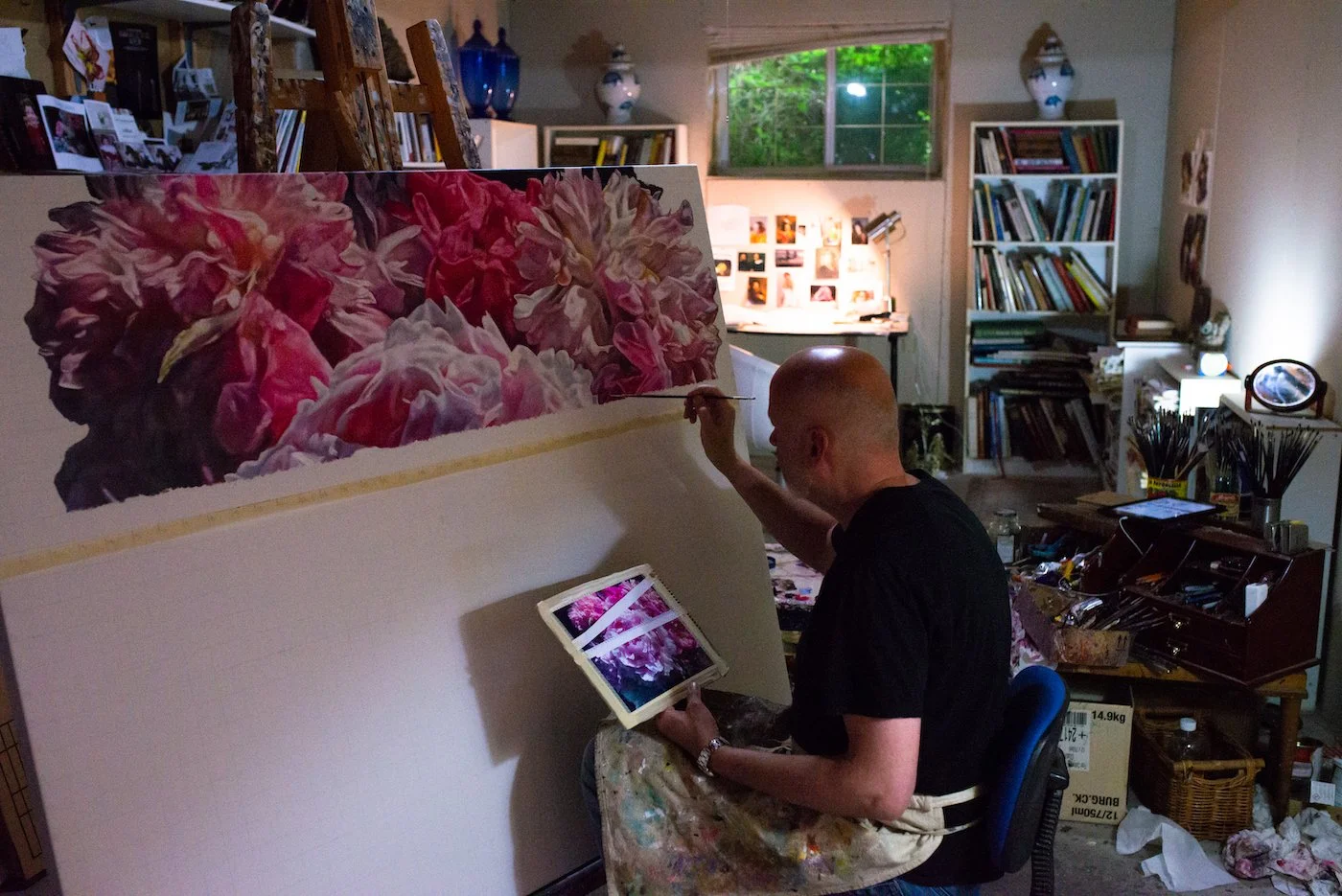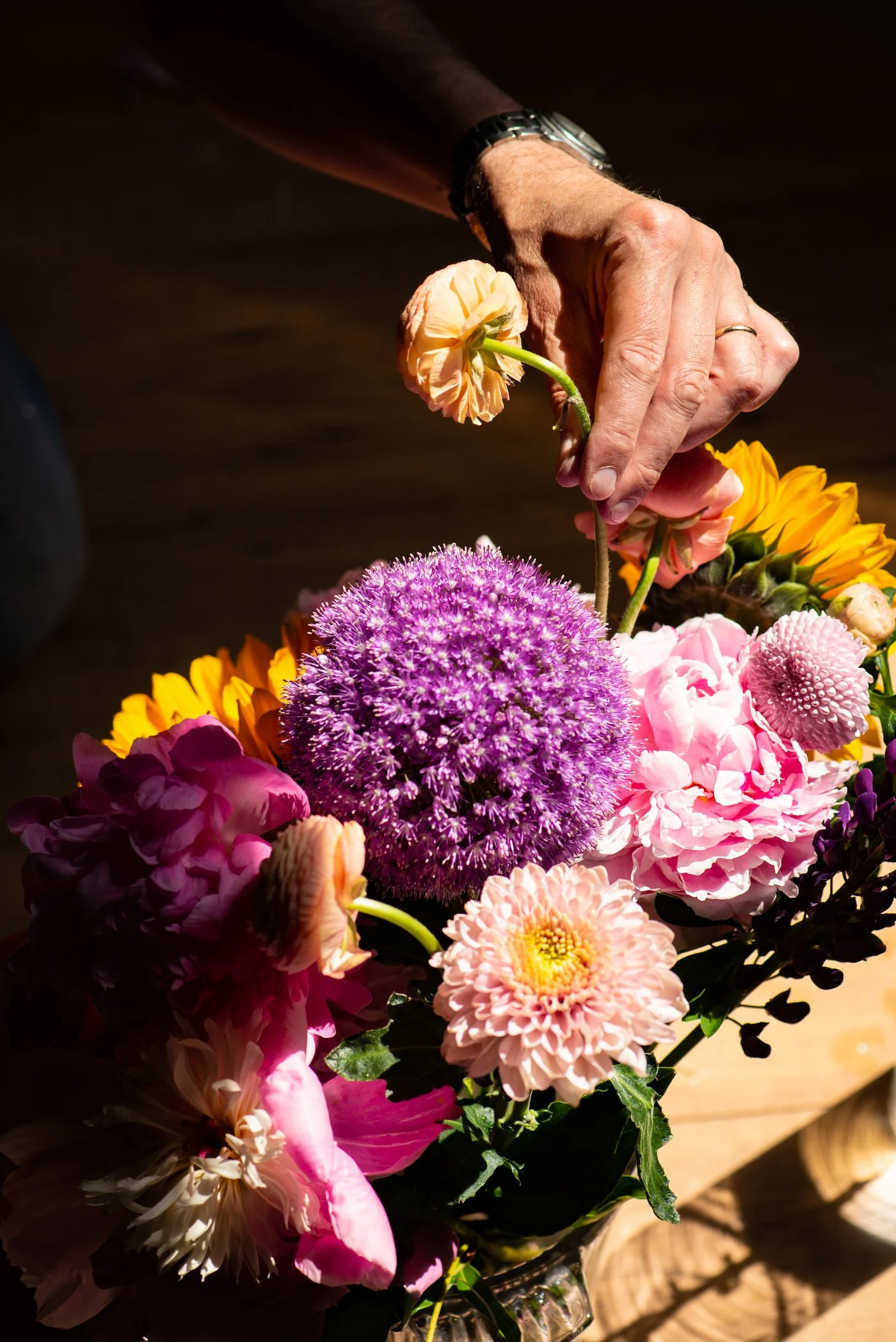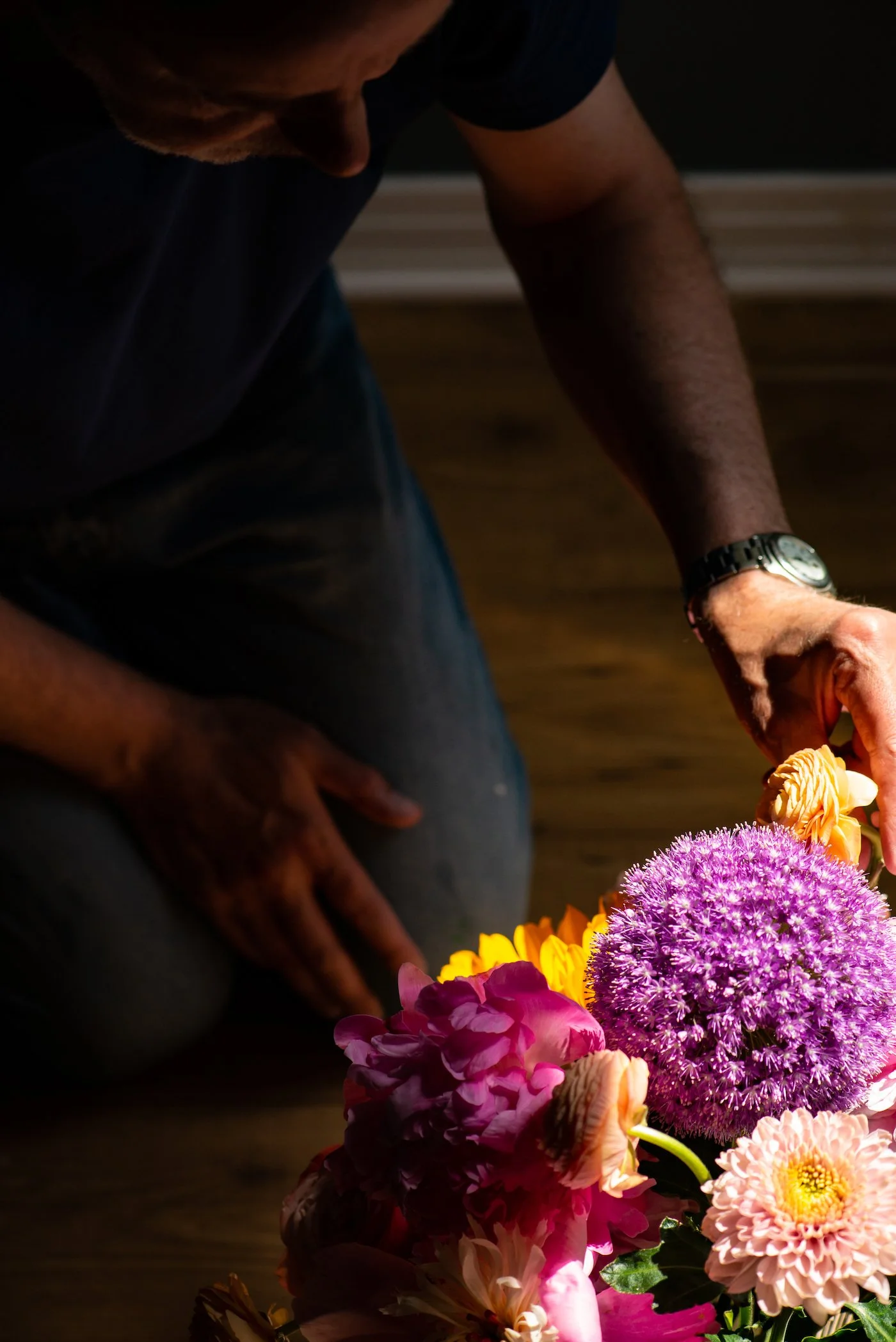The Studio in the World
On Art and Mindfulness by Enrique Martinez Celaya is an invaluable book for artists. I appreciate his notes on the studio. He says, “The studio is in the world. All your problems are artistic problems. The world illuminates your work and your work illuminates the world.” He goes on, “Your work should reflect who you are, where you are, and what you need. The right studio facilitates and amplifies the right vision. The wrong studio thwarts the spirit.”
I’ve never had an elaborate space to work in but it’s a space that works for me. It’s in my home, which means the commute time in the morning is about 30 seconds. In the summer I’m particularly glad for this arrangement. I can take a break from the painting and take photos of flowers from our front yard garden. For some artists, the separation of their studio is important, but for me the opposite has always been true. I like the above quotation, too, because I think my work reflects what I need, flowers, and I think my work in turn gives the world something that it needs.
Summer in the studio can be hard. Everyone else is taking vacations and socializing. And artists should do all that, too! But for a painter of flowers, this is the season to get to work. I’m not the sort to get stuck, but I also like what Enrique Martinez Celaya says about that: “When you get stuck, when you cannot find the way in the studio, go to the studio anyway. Read there. Mop the floor. Rearrange things. Something will eventually happen.”
A friend recently asked me a question that comes up from time to time, and it’s a good one really. And this was, are you going to paint something besides flowers again, especially peonies. And I am looking forward to exploring other flowers, but when I run out of colour and shapes and compositional possibility I’ll consider it. I’ve only started to explore the forms. Add in light and shade and to me it’s akin to the combinations of lottery ticket numbers.
I don’t suppose Monet got tired of water lilies or that the world wishes he painted fewer, for example. But you never know when the next series will assert itself.
While I’ve always painted with a grid, it’s only in the last 5 years that I’ve been using it in the way I do currently — which is to paint square by square with no under-drawing (which I previously spent days making). I begin at the top and work row by row, sort of like making a brick wall in reverse. Though painstaking, this method paradoxically allows me to see more accurately and to paint more freely. Because I am less aware of the subject, and paint each square like an abstract painting, I become less aware of the subject per se, and my decisions brushstroke by brushstroke feel more inspired, to me.
I’m still learning and being inspired by technique and by the material of paint.
I think I’ve talked quite a bit about my grid process and my studio practice over the years, but not really much about the arranging of flowers. While I admire the work of others who make elaborate and traditional bouquets, I’m more interested in an organic and flowing bouquet form. I’m interested in the ways that flowers can become abstract shapes, almost, but I also want to evoke the way that most of us enjoy flowers from our gardens, or even from the grocery store. As soon as a bouquet hits a vase, I know my first impulse is to lean in and take in that fragrance. It’s a very human gesture, and that’s something that I think connects us all, that memory moment, the scent, the gesture. It also connects the viewer to the artist, that shared experience, and I think that’s a beautiful thing.
For me, that’s what it’s all about. We sometimes feel isolated as artists, or just ordinary people, but when we share that moment, that memory that flowers evoke, it’s very poignant, still.



